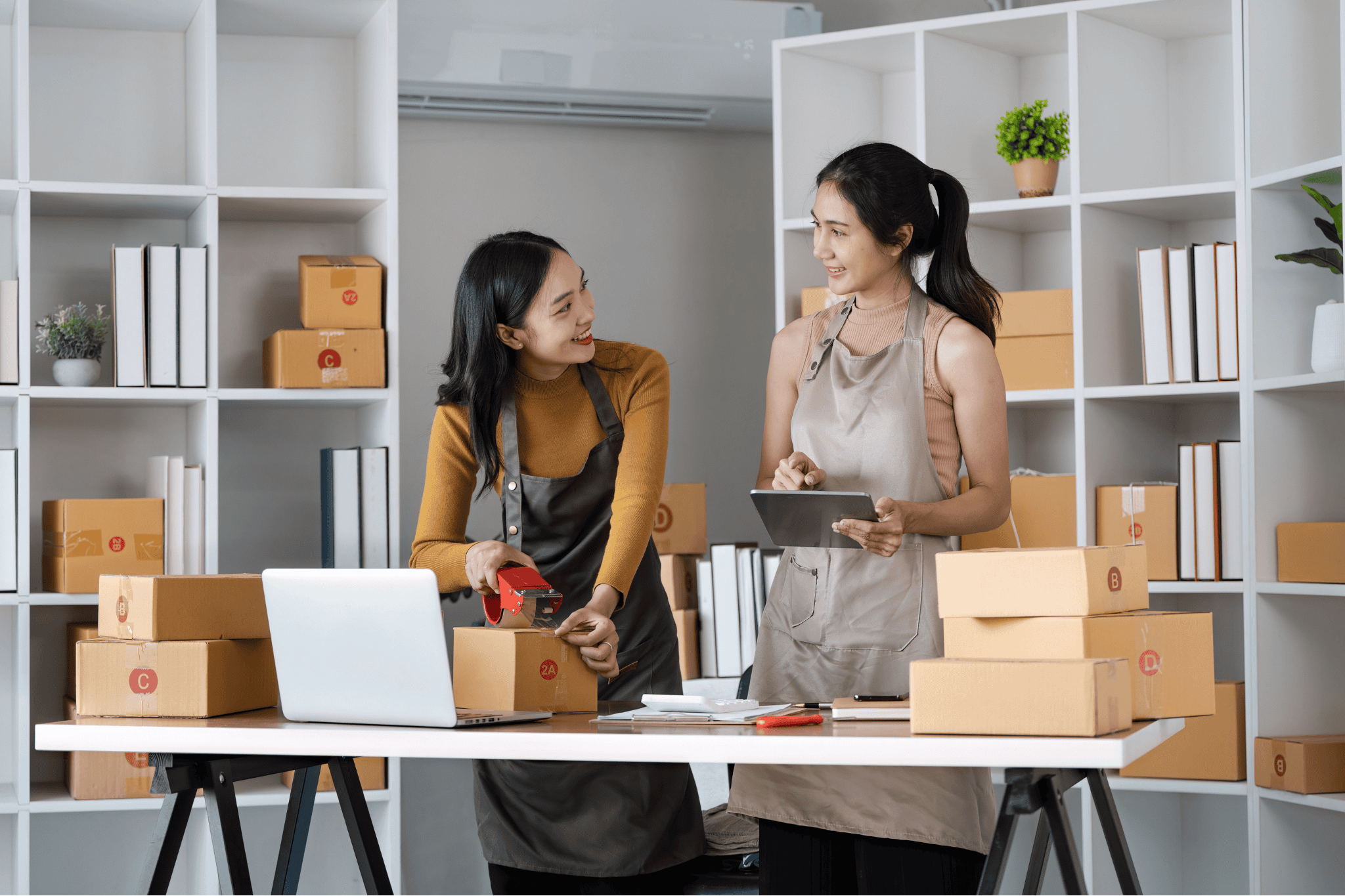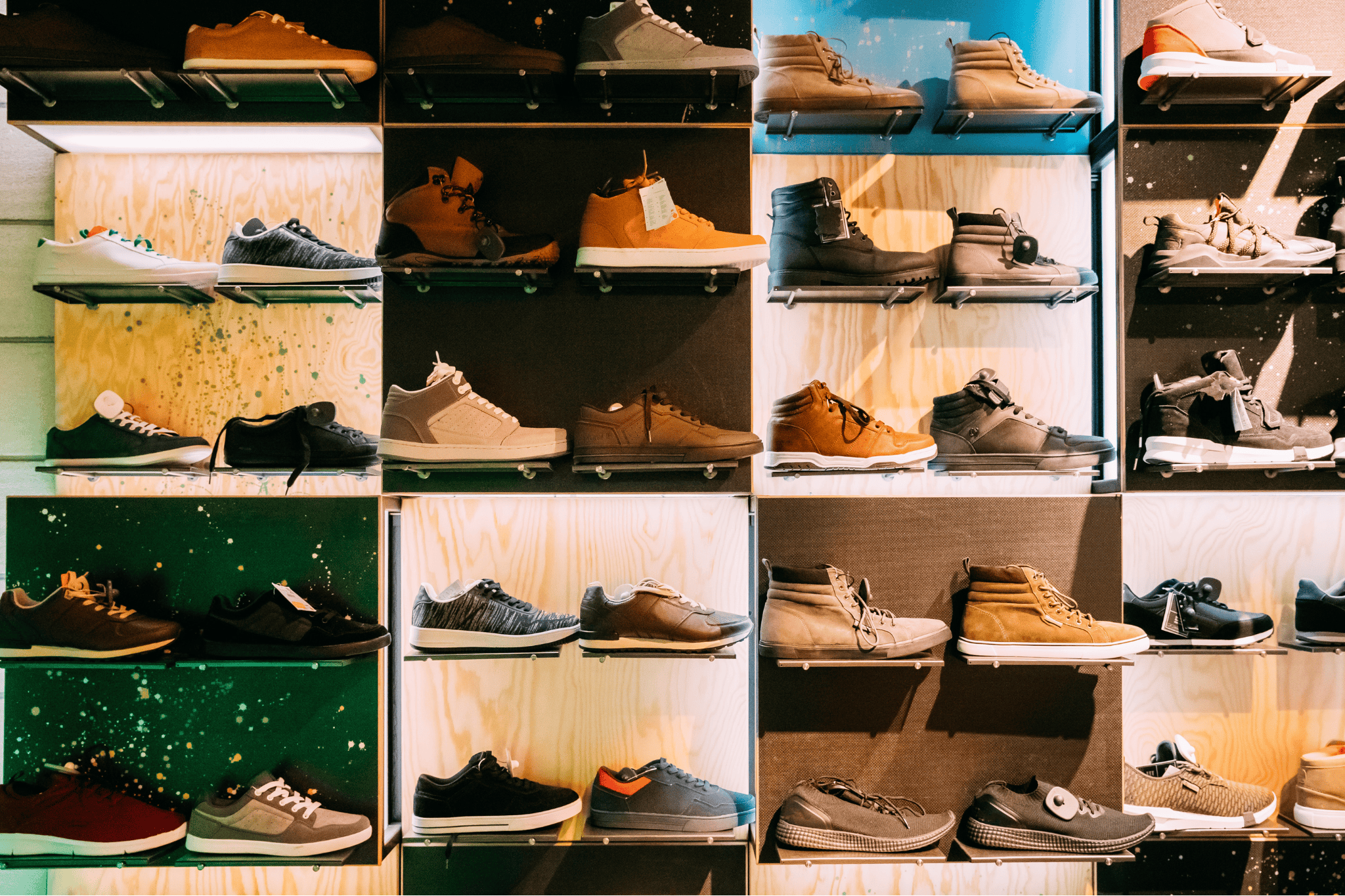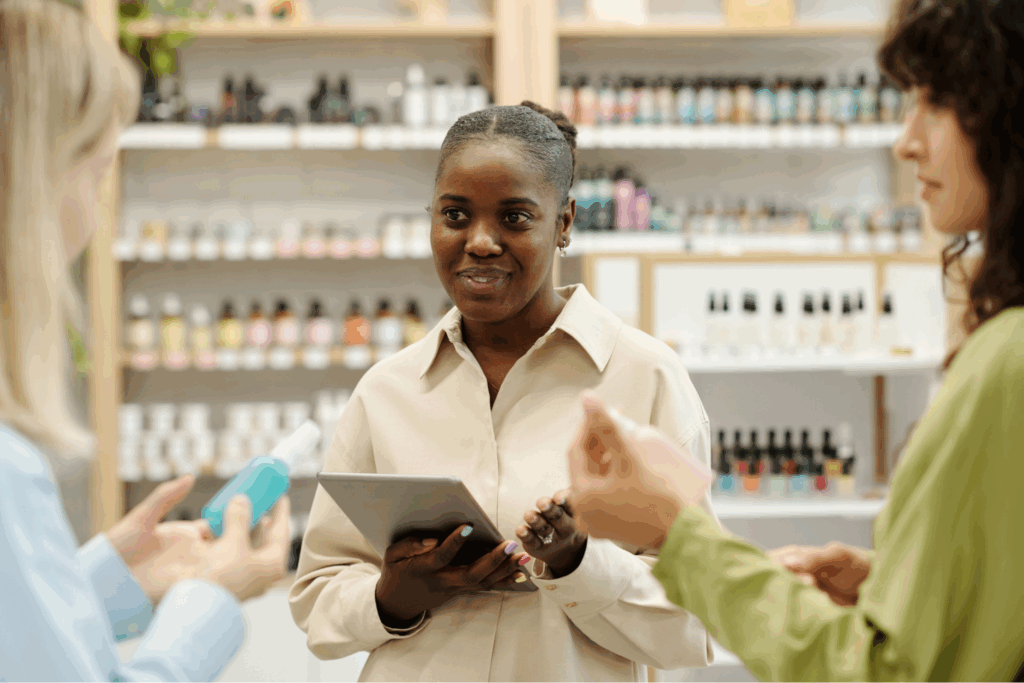
10 Popular Retail Services Worth Trying In Your Store
Picturing a “retail store” conjures images of products neatly lined up on a shelf, a friendly associate accepting a customer’s method of payment, and offering a receipt as proof of the transaction. But it can be way more than that. To stay competitive, think beyond the typical process and get creative with the retail services that surround the essential components of a transaction in your store. Here, we’ll explore various concierge services that will expand your business and enhance customer satisfaction.
What Are Retail Services? Types And Examples
Retail services provide an engaging and personalized customer experience, with the end goal of getting shoppers to buy your products. Retail services include tools, additional help, or bonus services that complement what you’re selling.
Retail services fall into several categories. Two common ones are concierge services and personalization services. Concierge services cover personal shopping and other touches that create a bespoke experience for shoppers. Personalization services leverage customer data to make unique offers and experiences tailor-made for a single shopper or a group of customers.
A boutique women’s clothing store with a virtual try-on area is a great retail service example. Customers see how different outfits look without going to a fitting room and without searching for the right size if it’s not in stock. This makes for a faster and more enjoyable shopper journey by removing the hassle of changing rooms and giving shoppers a space to experiment with style.
Another example is a bookstore that hosts author meet-and-greet events. Customers meet their favorite authors, hear them talk, and get their books signed. These events create a community atmosphere, make shopping more engaging, and add an element of excitement and personal connection.

What Are The Benefits Of Adding Services To Your Retail Store?
- Increase customer loyalty. Concierge services let you connect with your shoppers on a more personal level. When shoppers feel valued and satisfied with their shopping experience — often through a tailored experience that caters to their needs — they’re more likely to return. This repeat business is key to building lasting relationships and ensuring steady sales.
- Develop your competitive edge. Make your business more competitive by offering services alongside the goods you sell. This approach positions your business as innovative and customer-centric, attracting shoppers looking for added value.
- Bring in new customers. Unique services help grow your business as new shoppers are initially attracted by your service offerings. As more shoppers experience your personalization services, they’re likely to share their satisfaction with friends and family. That word-of-mouth helps draw even more business to your shop.
- Closing the personalization gap. Nearly half of U.S. shoppers say they don’t experience these kinds of services in brick-and-mortar stores, even though most shoppers have come to expect personalization efforts in some form. This is called the “personalization gap,” and by offering personalization services that help buyers feel noticed and appreciated, you’ll attract more customers who seek out a satisfying shopping experience.

10 Types Of Retail Services To Consider
1. Personal shopping
Personal shopping allows clients to meet their needs with the help of their own assistants. Department stores like Nordstrom provide personal stylists who curate outfits based on individual styles and occasions.
This complimentary service saves consumers time and ensures they leave with items that match their fashion sense. The added personal assistance, which presents the shopper with product suggestions directly from your company, also builds a stronger relationship between the customer and retailer. For retailers, this service boosts the bottom line: stores report doubling, tripling, or quadrupling basket size once a personal shopper gets into the mix.
2. Consultations
In these one-on-one or small group sessions, retailers offer tailored guidance and suggestions to customers. This type of service establishes you and your business as trustworthy industry experts by developing personalized solutions.
For example, in addition to selling a wide range of pet products, Petco provides veterinary consultations and appointments. Pet owners schedule appointments to discuss their pets’ health and receive professional advice from licensed veterinarians. This service ensures pets receive comprehensive care while pointing consumers in the direction of Petco’s product line.
3. Maintenance and Repair
When an item breaks or needs tuning up, make your business the first choice for reliable service. This will allow you to demonstrate your business’s expertise and give customers a reason to check out other products while they wait for a repair.
Consider, for example, the outdoor recreation retailer REI, which offers clothing and gear repair services. The company handles everything from footwear and tent pole repairs to bike alignments and sewing adjustments.
In many cases, consumers can ship their items in for repair or bring them directly to a store. When a product is too damaged to repair, REI gets a chance to give personalized recommendations for newer and better versions of its products.
4. Personalized gift purchasing
Give customers the option to add deeper meaning to their purchases. It’s a great way to build on top of the items you sell, as shoppers will have to first buy your products before requesting personalization.
The e-commerce retailer Things Remembered, for example, bases its entire business model on its retail personalization service. The company customizes engravings, embroideries, or messaging on products like jewelry, glassware, and keepsakes. Even if you don’t offer customization for all products, providing this option for select items opens your business to customers interested in something truly special for themselves or a loved one.
5. Product customization
Many businesses allow clients to tailor products to their exact preferences, which is a great way to meet specific shopping needs and boost customer satisfaction. Consider Susan Lanci Designs, an online boutique that specializes in luxury dog accessories.
Customers select and modify an item to match their own style and their dog’s personality. Over a dozen collar color choices are available, which are then adorned with colored crystals, bows, or flowers. Whether you sell coffee cups, quilts, or athletic gear, offering product customization creates a unique retail experience that sets your business apart from the competition.
6. Product rentals
Give customers temporary access to items without the commitment of ownership. This model works well for high-ticket items that take more research or commitment to buy, like designer gowns. It’s also great for products that are not used often enough for most people to buy, like specialized sporting equipment or camera lenses.
Rides N Motion, for example, is an Arizona-based electric bike retailer. Those who aren’t ready to or don’t want to own a bike take one out for a spin for an hour, a week, or somewhere in between.
A product rental service gives customers access to a wide variety of electric bikes for a limited time at a fraction of the cost. This business model attracts customers who may not need or cannot afford to buy certain products outright while opening a new revenue stream for your shop. Product rentals are also a great way to let potential customers try your product out before making their final purchase.
Power Up
Product rentals are a great way to introduce product interactions to your store. For 6 more customer experience ideas, check out our blog on it here.

7. Product demos
Product demonstrations, also known as retail sampling, allow customers to experience your products before buying them. These demos showcase product features, benefits, use cases, ease of use, and special features, highlighting the value they’ll bring to customers.
Food samples or knife demonstrations at club stores come to mind, but there are creative ways to apply this tactic to other industries. For example, a hair supply shop might give live demonstrations of a curling cream to show how it works. By demonstrating how the product works, the store illustrates the product’s value to customers and encourages them to make a purchase. (And if you’re thinking omnichannel marketing strategies, consider live-streaming the event on social media with tie-ins to buy the product right on the page.)
8. Product installations
Product installations are a valuable service for customers who don’t have the time, tools, or inclination to set up items themselves. In some cases, such services are the difference between a customer doing business elsewhere and choosing your products due to the extra convenience. Major appliance and electronics retailers like Best Buy offer product installation services.
An art gallery, for instance, might offer a comprehensive service where specialists transport the purchased artwork and hang it in customers’ homes. These professionals help clients choose the perfect spot for their artwork, ensuring it complements their space. Customers don’t have to worry about the logistics of transporting a large, delicate piece or the hassle of installing it themselves.
9. “Ask Us” table
An “Ask Us” table provides a dedicated space for customers to get personalized recommendations from knowledgeable retailers. This service enhances the shopping experience by offering expert guidance and building rapport between customers and your employees.
Barton Springs Nursery, for example, has an innovative Genus Bar concept. At the Genus Bar, customers are educated by onsite specialists on plant care, landscaping, and gardening techniques. This interactive experience helps customers make informed decisions about their plant purchases and fosters a sense of community within the nursery.
Power Up
Amy and Greg, owners of Barton Springs Nursery, joined us on The Power Up Podcast. Tune in to hear how they turned a seasonal business into a year-round success.
10. Educational services or lessons
Classes position your brand as an industry expert, demonstrating your knowledge and increasing customers’ confidence in your products. They’re also the perfect platform for introducing new items to customers.
Cake Craft Shoppe is a small business that specializes in baking supplies. The shop offers educational services, including a 16-week program that teaches students cake-decorating techniques. The program was quite successful: it not only expanded the shop’s offerings but also opened up a new demographic of customers—children, teenagers, and their parents.
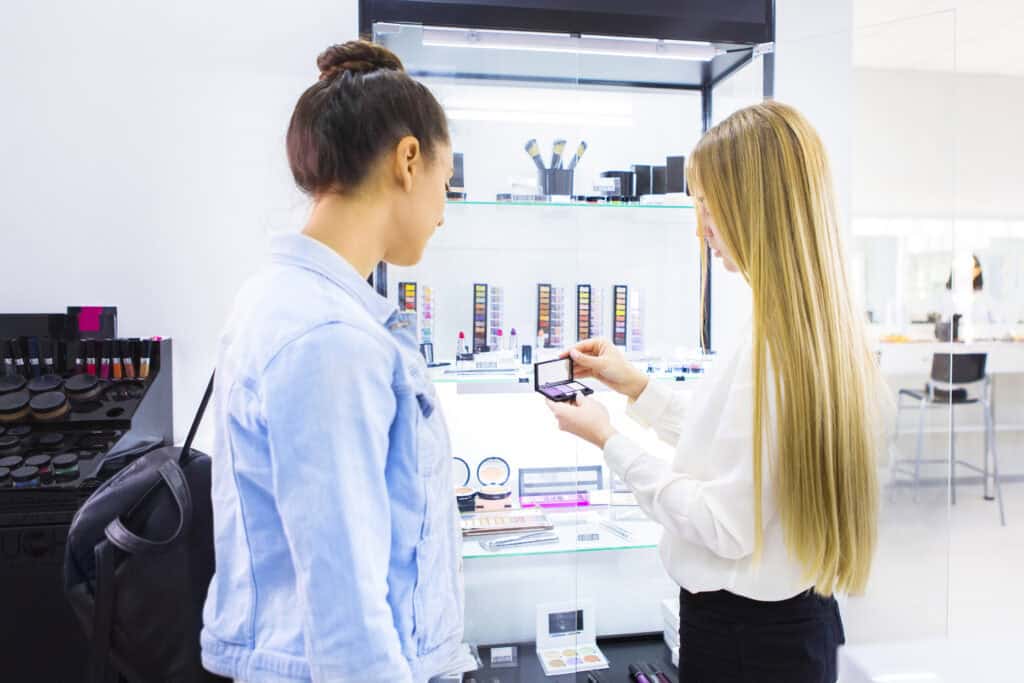
Free vs. Paid: Should You Charge For Concierge Services?
Free services
Free services are great for introducing new customers to your brand. This allows you to engage and build rapport with potential shoppers who are curious about your offerings but need more convincing to commit financially. Free services also serve as an impactful marketing strategy, generating buzz and positive word-of-mouth.
Global makeup retailer MAC Cosmetics, for example, offers complimentary makeup applications where in-store specialists work with customers to enhance their look. Shoppers get personalized advice and even have the option to get an everyday makeup regime tailored to their preferences and skin type. This concept introduces customers to MAC products — including items the shopper wasn’t initially looking for — and builds that personal rapport that leads to repeat business.
The downside of offering free services, however, is that they place extra demand on your resources. You’ll have to pay for free services yourself in some way, whether through hiring specialists or allocating staff hours to new projects. There’s also a risk that customers might not fully appreciate the service they receive if they haven’t financially invested in it. This could backfire and lead to a lower conversion rate from trial to repeat business.
Paid services
Paid services present a lucrative revenue stream for your retail business, positioning your offerings as high-value and exclusive. Shoppers who pay for services often have higher expectations, which leads to increased satisfaction and loyalty when your business delivers a positive customer experience.
For example, Williams Sonoma, a kitchenware retailer, offers cooking classes taught by experts who share tips and recipes while promoting their culinary products. These classes create a unique experience that highlights the quality and utility of Williams Sonoma’s merchandise in a real-world setting. The store offers both free and paid classes to balance attracting new participants and demonstrating the quality of their workshops and the products they sell.
While paid services contribute to your retail business’s profitability, you need to find the right approach to generating income and keeping up with customer satisfaction. It’s also key to price your services competitively without compromising on quality. Otherwise, you risk losing clients to competitors offering similar services for free.
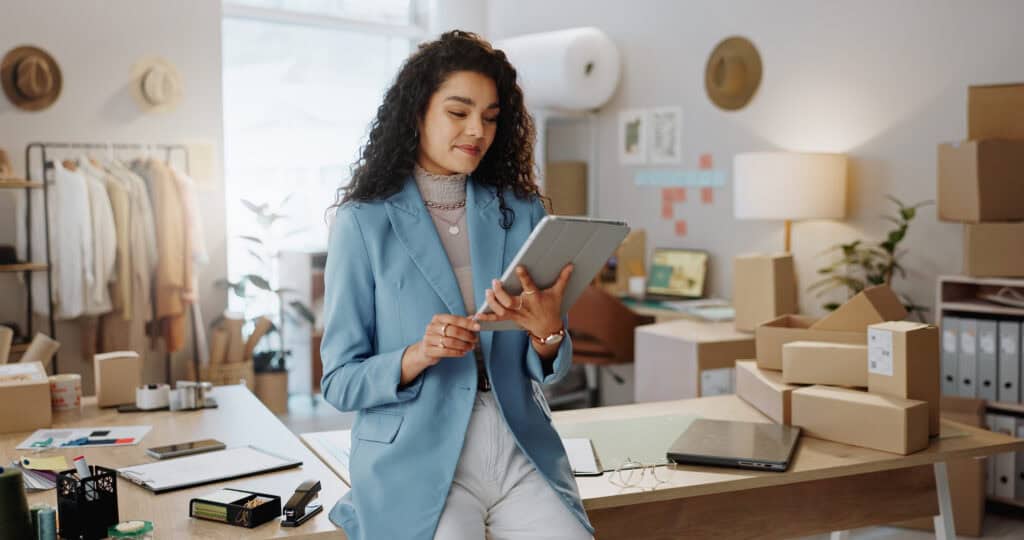
Best Practices For Introducing Retail Services In Your Store
Go for a test run
When you’re rolling out new services, it’s a good idea to start with a few ideas and try them out before going all in. Consider trying them out with a select group of loyal shoppers first or at just one store location. The client feedback will give you an idea of potential revenue and allow you to fine-tune the experience before launching it to a wider audience.
Track their performance
It’s important to keep tabs on how your new services are doing. Establishing key performance indicators (KPIs) based on customer data and purchase history shows how customers are responding, or not responding, to your new initiatives. Consider factors such as the conversion rate and profits of your services to make informed decisions about ways to improve and further invest in them. Send surveys to participants as well, and use their feedback to refine your offerings.
Spread the word
Digital marketing is your best friend when it comes to sharing your new services. Release exciting updates, post clients’ success stories, and give followers a behind-the-scenes peek into the new services coming to your store. Engaging posts like these build buzz, attract new shoppers, and keep your audience excited about what you have to offer.
Select the right leaders
When it comes to spearheading new initiatives, pick team members who are genuinely passionate about the services you’re introducing. Their enthusiasm will shine through in customer interactions and help drive adoption.
Maybe you sell outdoor gear and want to offer hiking and survival skills classes. While all your employees are knowledgeable about outdoor equipment, there’s sure to be one or two outdoor enthusiasts with extensive knowledge of these techniques. These individuals often make the perfect instructors, since their passion and industry expertise will better resonate with shoppers.
Serving Customers With An Elevated Retail Experience
Your retail store is much more than a place for transactions. Think about creating personalization strategies that leave a lasting impression on your customers. With so many types of retail or concierge services to choose from, you have the opportunity to put your own spin on things. Try out one of these suggestions to craft a shopping environment that’s memorable, enjoyable, and perfectly tailored to your shoppers’ needs.
The Newsletter For Small Businesses
Weekly expert insights, industry trends, and inspiring stories designed to help you run your business with confidence.
The Only Inventory System That Actually Helps You Run A Healthy Business
Thousands of customers all over the world use Thrive Inventory to run a healthy business.
Thrive Inventory gives you control over all your inventory, sales channels, and metrics, allowing you to make the right decisions at the right time.
Keep Reading

The Newsletter For Small Businesses
Weekly expert insights, industry trends, and inspiring stories designed to help you run your business with confidence.
Try Thrive Inventory For Free
Add Thrive Inventory to your business and maximize your potential. With powerful and easy-to-use products, it’s time to take control of
your business and see what you can do with Thrive.


